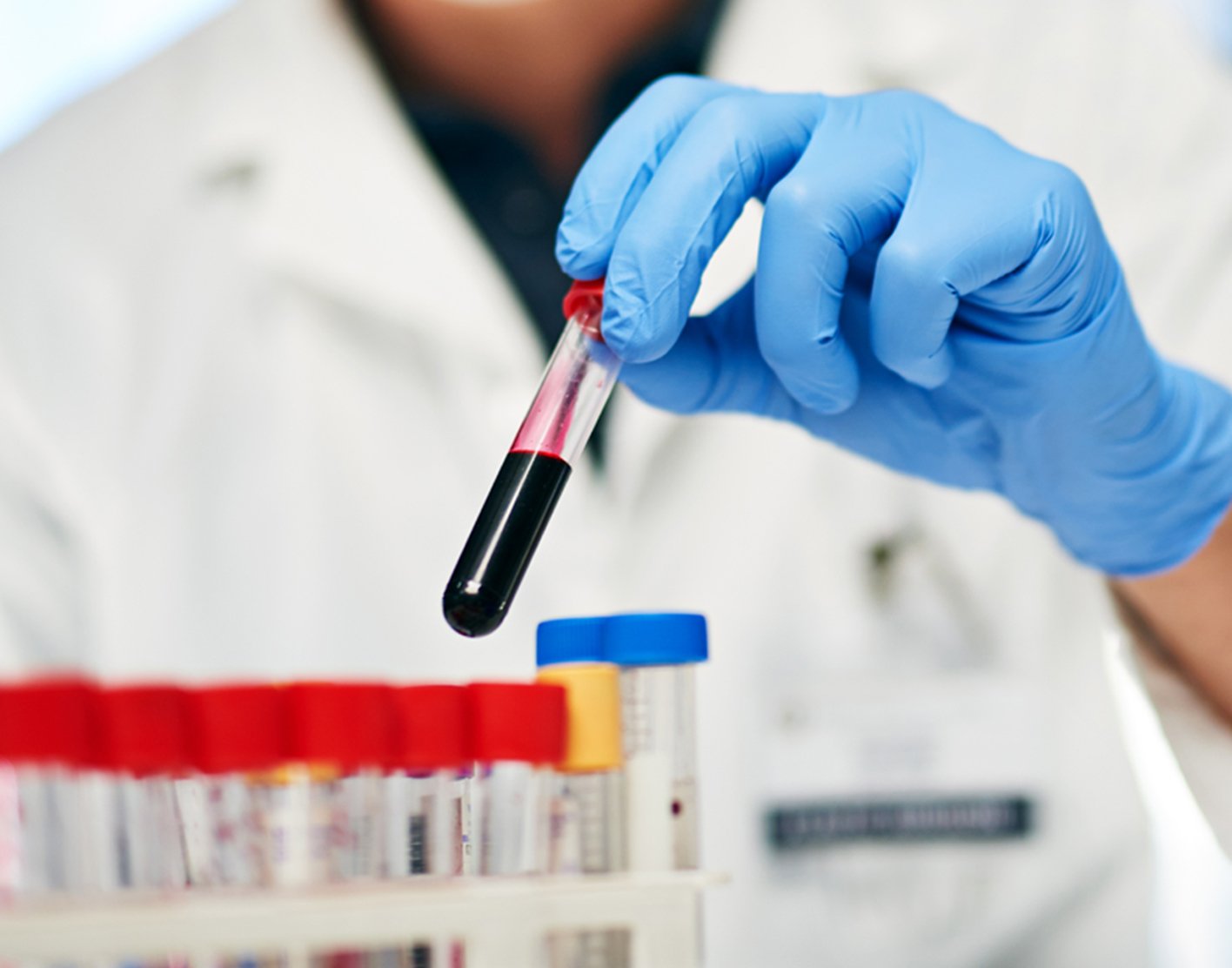
D-dimer test
Definition
D-dimer tests are used to check for blood clotting problems.
Deep vein thrombosis (DVT) Disseminated intravascular coagulation (DIC) Pulmonary embolism (PE) Stroke
Alternative Names
Fragment D-dimer; Fibrin degradation fragment; DVT - D-dimer; PE - D-dimer; Deep vein thrombosis - D-dimer; Pulmonary embolism - D-dimer; Blood clot to the lungs - D-dimer
How the Test is Performed
The D-dimer test is a blood test. You will need to get a
How to Prepare for the Test
No special preparation is necessary.
How the Test will Feel
When the needle is inserted to draw blood, some people feel moderate pain. Others feel only a prick or stinging sensation. Afterward, there may be some throbbing or a slight bruise.
Why the Test is Performed
Your health care provider may order a D-dimer test if you are showing symptoms of blood clots or abnormal bleeding, such as:
- Swelling, pain, warmth, and changes in skin color of your leg or arm
- Sharp chest pain, trouble breathing, coughing up blood, or fast heartbeat
- Bleeding gums, nausea and vomiting, seizures, severe stomach and muscle pain, and decreased urine
Your provider may also use the D-dimer test to see if treatment for DIC is working.
Normal Results
A normal test is negative. This means that you probably do not have problems with blood clotting.
If you are getting the D-dimer test to see if treatment is working for DIC, a normal or decreasing level of D-dimer means the treatment is working.
What Abnormal Results Mean
A positive test means that you may be making blood clots. The test does not tell where the clots are or why you are making clots. Your provider may order other tests to see where clots are located.
A positive test may be caused by other factors, and you may not have any clots. D-dimer levels can be positive due to:
- Being over 80 years old
- Heart disease
- High blood lipid or triglyceride levels
- Liver disease
- Pregnancy
- Recent surgery or trauma
This makes the test mostly useful when it is negative or when many of the above causes can be ruled out.
Risks
Veins vary in size from one person to another and from one side of the body to the other. Obtaining a blood sample from some people may be more difficult than from others.
Risks of having blood drawn are slight, but may include:
- Excessive bleeding
- Multiple punctures to locate veins
- Fainting or feeling lightheaded
- Blood accumulating under the skin (hematoma)
- Infection (a slight risk any time the skin is broken)
References
Chan NC, Weitz JI. Venous thromboembolism. In: Hoffman R, Benz EJ, Silberstein LE, et al, eds. Hematology: Basic Principles and Practice. 8th ed. Philadelphia, PA: Elsevier; 2023:chap 140.
Goldhaber SZ, Piazza G. Pulmonary embolism and deep vein thrombosis. In: Libby, P, Bonow RO, Mann DL, Tomaselli, GF, Bhatt DL, Solomon SD. Braunwald's Heart Disease: A Textbook of Cardiovascular Medicine. 12th ed. Philadelphia, PA: Elsevier; 2022:chap 87.
Kabrhel C. Pulmonary embolism and deep vein thrombosis. In: Walls RM, ed. Rosen's Emergency Medicine: Concepts and Clinical Practice. 10th ed. Philadelphia, PA: Elsevier; 2023:chap 74.
Lim W, Le Gal G, Bates SM, et al. American Society of Hematology 2018 guidelines for management of venous thromboembolism: diagnosis of venous thromboembolism. Blood Adv. 2018;2(22):3226-3256. PMID: 30482764
Review Date: 11/03/2024
The information provided herein should not be used during any medical emergency or for the diagnosis or treatment of any medical condition. A licensed physician should be consulted for diagnosis and treatment of any and all medical conditions. Call 911 for all medical emergencies. Links to other sites are provided for information only -- they do not constitute endorsements of those other sites. Copyright ©2019 A.D.A.M., Inc., as modified by University of California San Francisco. Any duplication or distribution of the information contained herein is strictly prohibited.
Information developed by A.D.A.M., Inc. regarding tests and test results may not directly correspond with information provided by UCSF Health. Please discuss with your doctor any questions or concerns you may have.



























